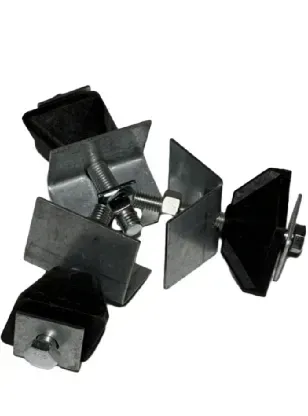loading...
- No. 9, Xingyuan South Street, Dongwaihuan Road, Zaoqiang County, Hengshui, Hebei, China
- admin@zjcomposites.com
- +86 15097380338
- Welcome to visit our website!
water pressure tank
Understanding Water Pressure Tanks A Comprehensive Overview
Water pressure tanks are essential components in various water supply systems, particularly in residential, agricultural, and industrial settings. These tanks are designed to maintain and regulate water pressure, ensuring a steady supply of water for various applications. This article aims to provide a comprehensive overview of water pressure tanks, their functionality, types, and maintenance considerations.
What is a Water Pressure Tank?
A water pressure tank, also known as a pressure vessel, is a container that holds water under pressure. The primary purpose of these tanks is to store water and regulate the system's pressure. They are often used in conjunction with well pumps, municipal water systems, and irrigation setups. The tank allows for a consistent flow of water, minimizing the wear and tear on pumps and preventing fluctuations in water pressure.
How Does a Water Pressure Tank Work?
The operation of a water pressure tank revolves around the principles of pressure and volume. When water is pumped into the tank, it compresses the air already present in the tank or a separate air bladder within a bladder tank. This compression builds pressure in the tank, which creates a force pushing the water out when a faucet or appliance calls for water.
As water is drawn from the tank, the pressure decreases, triggering the pump to refill the tank. This cycle helps to maintain a steady supply of water and pressure, reducing the number of times the pump has to run, which ultimately prolongs its lifespan.
Types of Water Pressure Tanks
There are primarily three types of water pressure tanks
water pressure tank

1. Bladder Tanks These tanks feature a flexible bladder that separates water from air. When water enters the tank, it fills the bladder, compressing the air to maintain pressure. This type is popular for its efficiency and ease of use.
2. Diaphragm Tanks Similar to bladder tanks, diaphragm tanks have a rubber diaphragm separating water from air. As the tank fills, the diaphragm flexes, allowing for pressure regulation. These tanks are also known for their durability and efficiency.
3. Gravity Tanks Although less common in modern systems, gravity tanks rely on the force of gravity to maintain water pressure. These are typically elevated tanks that allow water to flow naturally due to gravitational pull.
Maintenance of Water Pressure Tanks
Maintaining a water pressure tank is crucial for ensuring its longevity and efficient operation. Regular checks should include
- Pressure Monitoring Check the pressure gauge to ensure it stays within the recommended range, usually between 40-60 psi. - Air Charge Periodically, the air charge should be checked, especially in bladder and diaphragm tanks. Insufficient air pressure can lead to pump cycling issues. - Tank Inspection Look for signs of rust, corrosion, or wear, especially in metal tanks. Any visible damage should be addressed to prevent leaks.
Conclusion
Water pressure tanks play a vital role in maintaining water supply and pressure in various applications. Understanding their operation, types, and maintenance can empower users to optimize their water systems effectively. Whether for a home, farm, or commercial use, investing in a quality water pressure tank and taking proactive maintenance steps can enhance water efficiency and extend the system's lifespan.
-
Transform Your Spaces with FRP Grating SolutionsNewsNov.04,2024
-
The Versatility and Strength of FRP RodsNewsNov.04,2024
-
The Excellence of Fiberglass Water TanksNewsNov.04,2024
-
The Benefits of FRP Grating for Your ProjectsNewsNov.04,2024
-
Elevate Your Efficiency with FRP Pressure VesselsNewsNov.04,2024
-
Welcome to the World of FRP Pressure VesselsNewsOct.12,2024
-
Unveiling the Future of Filtration: Why FRP Filter Vessels are a Game ChangerNewsOct.12,2024
